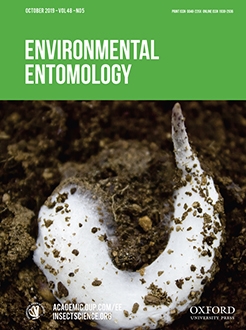The Asphondylia prosopidis Cockrell complex with its fungal associate produces four distinct bud galls on honey mesquite (Prosopis glandulosa). They are considered as potential biological control agents to reduce seed production of invasive mesquites. Previous studies suggest that the complex may consist of more than one gall midge species or biotype. Therefore, before conducting host specificity tests, it is essential to understand the relationships among the gall midges in the complex. Each gall type was collected from sympatric regions in Arizona, New Mexico, and Texas for four years. Here we show that midges producing each gall type were clearly separated based on phylogenetic analysis using DNA sequences in the cytochrome oxidase subunit I region. Furthermore, we confirmed that morphological differences between pupae from each gall type were discernible, although variable, using a scanning electron microscope. Based on these differences, we suggest that the A. prosopidis complex consists of four different gall midge species, three of which are cryptic species. Among them, Asphondylia species producing a barrel gall type and A. prosopidis producing the original gall type are potential biological control agents of P. glandulosa because they are multivoltine species with four to five generations per year that complete their annual life cycle exclusively on flower buds of mesquite.
How to translate text using browser tools
30 July 2019
Delineating the Asphondylia prosopidis Complex (Diptera: Cecidomyiidae): Possible Biological Control Agents of Honey Mesquite
Ikju Park,
David C. Thompson
ACCESS THE FULL ARTICLE
It is not available for individual sale.
This article is only available to subscribers.
It is not available for individual sale.
It is not available for individual sale.

Environmental Entomology
Vol. 48 • No. 5
August 2019
Vol. 48 • No. 5
August 2019
Asphondylia prosopidis
Cecidomyiidae
flower bud gall
honey mesquite
Prosopis glandulosa




